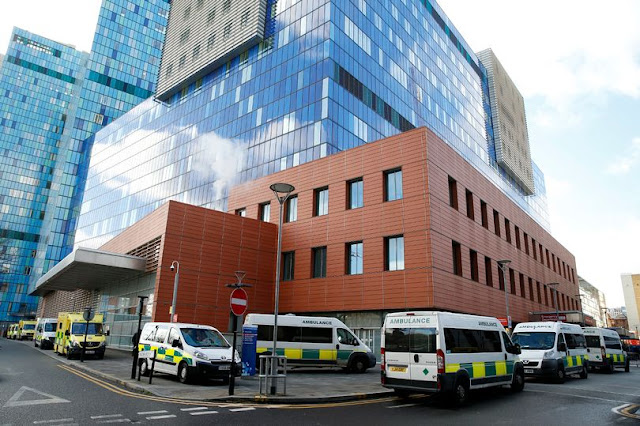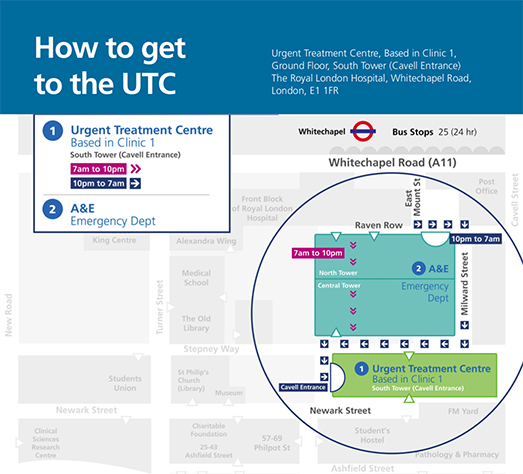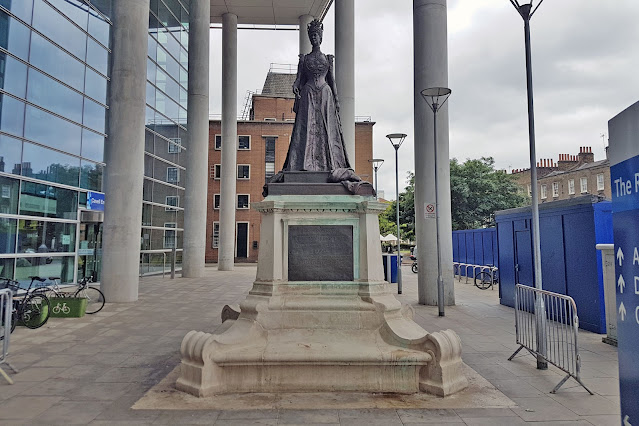Should I go to Accident and Emergency?
It was interesting to attend Thursday night's meeting about the Royal London Hospital's Accident and Emergency (A&E) Department. Lots of information was exchanged both from the point of view of doctors/nurses, but also also by patients. Below is a summary which may be of use and interest, and highlights the little-known Urgent Treatment Centre at the London which is GP-led.
How Long will I have to wait?
The department is working on signage to give an idea of how long people will have to wait. But as most of us realise, it isn't easy to predict. Anyone who has gone around the corner towards Milward Street/Stepney Way will have seen that the area is frequently nose to tail with ambulances bringing in 999 cases via the dedicated ambulance entrance. And then of course there are the six or so patients helicoptered in each day. These three ways of "getting in" mean you often can sit in the waiting room and are left to wonder why no one is being seen - when in fact the major cases are coming in via the helipad or ambulance.
If you have been to the X-ray or blood test departments on the second floor lately you will have seen they have moved on from supermarket deli counter ticketing: they now use the SwiftQueue system which gives a smart live dashboard. The A and E is looking to move over to something like this for walk-in patients.
The majority of those visiting (50-60%) do not have very serious or life-threatening illness or injury.
A&E sees around 400 people per day, and the majority of these could have been seen elsewhere such as by a local pharmacist (find a pharmacy), their own GP (find a GP) or at a minor injuries clinic (at Barts) or at the Urgent Treatment Centre (at the Royal London Hospital's Cavell Entrance). It would really help the A&E department if folk only came to A&E if immediate care is needed for something that is very serious or life-threatening.
But I can't get a GP appointment and need to be looked at?
Yes, most of us struggle to get GP appointments. Depending on our GP surgery, we sit with our phone on redial at 8.30am to book an appointment; try the Accurx online system (e.g. St Stephens); or use e-consult.
Another alternative that seems to be a secret known only to some, is to visit the Urgent Treatment Centre (UTC) at the Royal London Hospital. In fact, if you go to A&E and are deemed not to have a serious or life threatening injury or condition, you will literally be sent around the block to the UTC (a three minute walk). The UTC is staffed by GPs and specialist nurses. Not only is it open 24 hours daily, but appointments are also bookable via NHS 111. Booking before you travel can save lots of waiting around. They can get X-rays booked and deal with a large number of conditions such as: sprains and strains, suspected broken limbs, minor head injuries, cuts and grazes, bites and stings, minor scalds and burns, ear and throat infections, skin infections and rashes, eye problems, coughs and colds, high temperature in child and adults, stomach pain, being sick (vomiting) and diarrhoea, emergency contraception.
An Appendix
The UTC entrance is right next to the statue of Queen Alexandra, the wife of Edward VII, who famously had to delay his coronation due to appendicitis. He was operated on by the London Hospital's Sir Frederick Treves (widely known for his friendship with Joseph Merrick, "The Elephant Man"), and assisted in the operation by the pioneer of antiseptic surgery Joseph Lister. The operation was performed on a table in the Music Room of Buckingham Palace. The King was opposed to the operation as it would delay the coronation, which led Treve's to state if he wasn't permitted to operate then it would be a funeral!
Following the successful operation, Queen Alexandra began a close association with the hospital and the East End which continues to this day through the Alexandra Rose Charity and initiatives such as the Tower Hamlets fruit and veg on prescription project.



